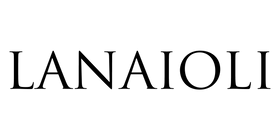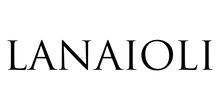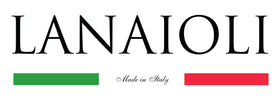Lanaioli was born as a luxury brand in the fashion sector with a vision towards high Quality standards for its productions.
The choice of yarn entirely processed in Italy and the manufacturing of our products carried out with craftsmanship expertise are distinguishing elements of our Brand, which offers uncompromising Quality for our Customers.
In luxury fashion, it is not just about quality. From the beginning of our activity, we have distinguished ourselves for our attention to ecologically sustainable choices. We have worked on two fronts to contribute to the urgent need for a growing economy that respects the planet and its natural resources.
REGENERATED RAW MATERIALS
The first choice we made with our heart was to immediately use regenerated raw materials.
Since the launch of our brand, we have imagined a line of products made with the finest yarn available on the market: pure Regenerated Cashmere.
This yarn has undisputed quality characteristics and manages to provide maximum comfort while presenting itself in a very thin consistency. Moreover, Cashmere is thermoregulating, allowing the body temperature to remain unchanged in case of cold or heat. But not only that, cashmere is also a hypoallergenic product and does not irritate the skin and has breathable properties, making it wearable even in direct contact with the skin.
Cashmere, however, is produced in places very far from the companies that produce high-quality knitwear in Italy and beyond. It is obtained from combing the fleece of the Capra Hircus, native to the eponymous Kashmir region, between India and Pakistan. Each adult goat has a very limited annual production, usually around only 200 grams. Being so rare, it is inevitable that the price of cashmere is so high.
The distance of the breeding areas of the Capra Hircus goats, which have spread to various parts of the world, including small experimental farms in Italy, makes this product expensive. This is due to the costs related to the long journeys necessary to transport the wool yarn to textile production sites. These long transports inevitably lead to an increase in CO2 emissions needed to create garments with this exceptional fiber..
For this reason, we have chosen Regenerated Cashmere or also recycled, which is not a by-product of this precious yarn, but in fact is giving new life to garments that were already made in Pure Cashmere.
There are companies that take care of recovering from holey, torn, or very worn sweaters that are discarded by consumers and thrown away, collecting them and sorting them by color and type of material they are made of.
Thanks to a sorting done exclusively by hand, impurities and sweaters that are not 100% cashmere are eliminated. Then it goes to a shredding phase, which reduces these discarded sweaters into small pieces, which come back to life thanks to a carding process, as would be done for Cashmere recovered from the fleece of the Capra Hircus.
Finally, the fiber obtained from this process is twisted to be reinforced, transforming into completely new yarns, giving life to a pure Regenerated Cashmere yarn, ready to be used for new high-quality textile production.
This process allows significant savings in water, electricity, fuel for transport, and carbon dioxide emissions into the air, making Cashmere yarn production decidedly sustainable and eco-friendly.
RAW MATERIALS AT KM0
The issue of long transports we described for Cashmere supply is actually a problem for other types of yarn as well.
Just think of Merino Wool, a fiber obtained from shearing the homonymous sheep breed. Merino wool has high-quality characteristics, perhaps just slightly inferior to Cashmere. Merino wool differs from other types of wool for its significantly higher fineness.
Sheep wool farms in Italy are disappearing. This is because in recent decades, Italian breeders have been encouraged to produce milk (used to make high-quality cheeses) and meat, much more profitable activities. Wool, obtained from the annual shearing of sheep, has become a problem. It has no economic value and must be disposed of as waste, incurring disposal costs..
Currently, the largest farms and the most advanced wool industries are in Australia. Just think that a certain type of lightweight wool is called "Tasmania" after the homonymous Australian island state.
Lanaioli has started a collaboration with a series of entities (breeders, entrepreneurs, organizations) to create in the short term a Network of companies capable of independently producing decent quantities of high-quality Merino wool by rediscovering endangered native breeds.
The goal is to fairly pay local breeders for the wool they deliver. This will help them improve the quality of the animals raised and process the wool in dedicated Italian facilities. The resulting yarn must be fine enough to compete with that from other regions and can be used for our products.
We have made a conscious choice full of challenges. But from day one we embraced this idea of a short supply chain project for Made in Italy wool. This project aims to improve the environment, reduce costs, and minimize damage caused by long transports of raw materials across Europe.
Keep following us and supporting us in this challenging project of environmental sustainability and labor dignity.







